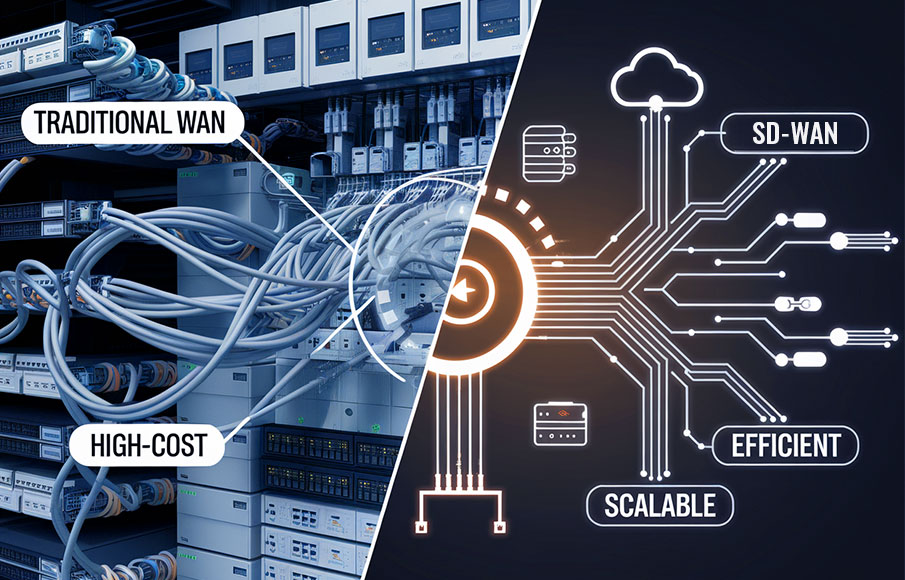3 tips to help SMEs gear up for recovery post COVID-19
- 07 October 2020

Small and medium-sized enterprises (SMEs) play a significant and important role within Singapore’s economy and society.
Making up 99% of the overall number of enterprises within the island state, SMEs account for nearly three-fourths of employment. From the kopitiam auntie that sells you your morning Kopi-O to the carpentry and metalworking shops that help furnish your cozy abode in Singapore, those small business owners are what keep the Singaporean economy going.
The COVID-19 pandemic and global economic downturn have significantly altered the situation for these small business owners. With workers asked to stay home and limit their time outside, restaurant owners that depended on foot traffic from office buildings, for example, saw a dramatic drop in customers. Recognizing the dire situation facing SMEs, the Singapore government has announced various support measures across four different Budgets alongside various other support programs to help business owners.
For SMEs, the pandemic brought into key focus a pain point that had been previously identified, albeit with limited progress – the need to digitalize and develop new ways of engaging with customers online, in order to future-proof their businesses.
The need to change in the ‘New Normal’
In our current ‘New Normal’, a company’s digital presence has changed from a good-to-have option into a mission-critical must-have for businesses of all sizes to survive.
The pandemic has altered consumer behavior significantly, with many consumers, if not all, going online for their shopping, food and deliveries. SMEs must acknowledge this new consumer behavior and reach out to them in relevant channels.
That is why SMEs must realign their business model to accommodate new habits in a digital-first world. Adopting e-commerce models, for example, to deliver their goods/services (even with a physical shop) will be key to engaging consumers, whose first point of sales is now online. Going online also offers traditional brick-and-mortar businesses an opportunity to reach new consumers and expand their customer pool, such as markets selling fresh produce online.
In addition, SMEs looking to succeed in today’s age of Industry 4.0 need to look at deploying digital technologies like data analytics and the Internet of Things (IoT). To increase their performance and reduce costs, sectors like manufacturing are employing artificial intelligence (AI) and Industrial IoT to enhance productivity and optimize efficiency.
What to keep in mind on the journey to digitalization
To build a brighter, digital future, SMEs must consider a few key issues when choosing a digital transformation partner.
1. Financial Commitment
Keep an eye on your financial commitment.
The financial bottom line is key, especially since SMEs may not have ready access to deep financial resources and extensive partners compared with MNCs. They’re also not borrowing much from banks to bolster their balance sheets, as seen in a decline in bank lending to SMEs in the Monetary Authority of Singapore’s “Financial Stability Review 2019”.
Business owners should thus try to avoid being locked-in to long-term contracts with service partners, as this reduces the flexibility needed to swiftly adapt to changing market conditions.
Consider partners with shorter, flexible contract lengths, or those with as-a-service business models where you pay for only the services used. Avoid putting up too much capital upfront; on-demand services enable you to convert fixed capital expenses into variable operating expenses that more accurately reflect your needs – and save you money in the longer run.
In addition, make use of the support afforded by the government, such as the Enterprise Grow Package, which is precisely designed to help businesses adopt pre-approved digital technologies. One such initiative is the launch of the new digital payment platform GoBusiness, which provides businesses a single touchpoint for all digital transactions with the government. Another program useful to SMEs is the SMEs Go Digital program, providing SMEs a structured and inclusive approach towards the adoption of digital technologies.
2. Scalability
Don’t plan for a solution that simply fits you now. Look for a longer-term, sustainable solution that can grow with you.
Fundamentally, to ensure every part of your business stays connected, your network must be able to handle fluctuations in demands for bandwidth, speed, and connectivity. Poor performance can result in the loss of business and customer trust.
Your network must be agile and flexible enough to scale up during peak traffic periods and ensure a smooth digital experience for your customers, and scale down during lulls to minimize total costs of operations while still ensuring optimum performance.
You need a “right-fit” digital infrastructure that can scale quickly and cost-effectively to minimize unnecessary costs and ensure a fully optimized platform.
3. Cybersecurity
Inevitably, the more you digitalize, the more entry points exist for attacks.
Whereas there are significant tangible benefits for pushing towards a digital future, there are also downsides to the growing connectivity. Every new connection to the internet and your hardware provides malicious actors with an avenue for attack. COVID-19 has further exacerbated the situation with cyber attackers exploiting the fears and confusion sown by the pandemic.
One common way of attack is to use Distributed Denial-of-Service (DDoS), which can quickly overwhelm a server with a multitude of requests. DDoS can cripple businesses, especially as they become dependent on online services. Often acting as a smoke screen for other intrusions, two-thirds of customer-facing enterprise systems globally bear the majority of DDoS attacks, according to research by Netscout, with 16 DDoS attacks taking place worldwide every minute.
SMEs often lack the infrastructure to adequately respond to these attacks, falsely believing that they would never be targeted. However, a company’s size is no longer an indicator of risk. Therefore, SME owners should consider including an automatic DDoS detection service from their internet provider.
Ultimately, with consumers and countries becoming increasingly familiar and conversant in the digital space, it is important that small and medium-sized businesses are not left behind.
By keeping these three issues in mind, SME owners can look towards embarking on their digital transformation journey to help them through the pandemic, and future-proofing their business for the new digital future.
Yes! I want to know more about how SPTel can help in my digitalisation journey! Contact us for more information, or drop us an email if you have any questions.












